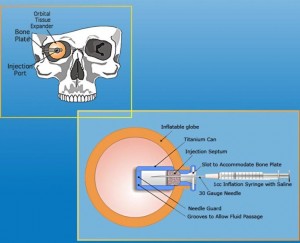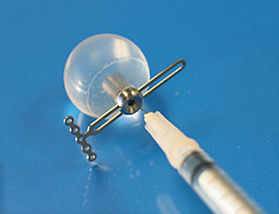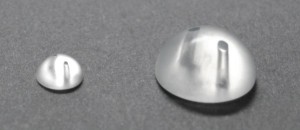The orbital expander is an implant that expands gradually within the anophthalmic socket. It consists of an expandable, flexible balloon held in place by a titanium plate anchored to the side wall of the orbit with screws. The implant is self-centring once in place. It is gradually filled with sterile saline solution using a syringe through a central access and exerts constant pressure against the walls of the socket. The main limit of this implant is its constant pressure in all directions, even where the endo-orbital structures are weaker and therefore need lower pressure.
The tissue osmotic expander (Hydrogel orbital expander) is made of a copolymer of methylmethacrylate and N-vinylpyrrolidone similar to that used for the manufacture of soft contact lenses. This innovative biomaterial is chemically modified in order to be able to expand up to 12 times in volume when exposed to contact with liquids. The tissue expansion takes place passively with a constant rate of pressure of about 20-30 mm / Hg (the device absorbs fluid from the space surrounding tissue). The speed and time of expansion are dependent on the moisture available and the back pressure of the surrounding tissues.
Mechanical expander: is a PMMA conformer with an orthodontic screw used to record the tension on fornices. The main limit of this implant is the pression distribution. The pression is mostly distributed on the orbital bone structures rather than fornices. It can cause socket deformation in some cases.










